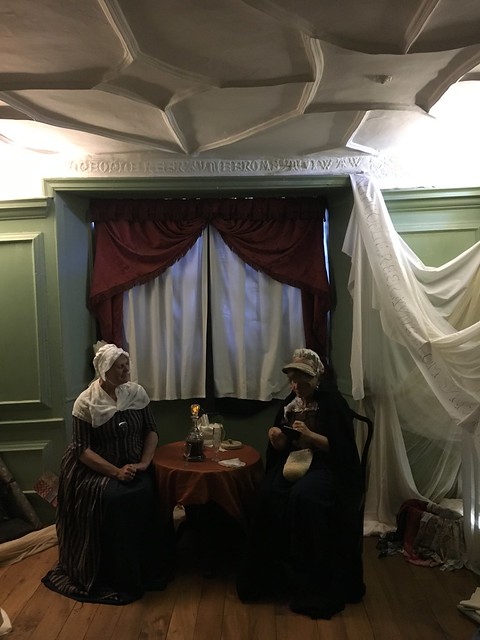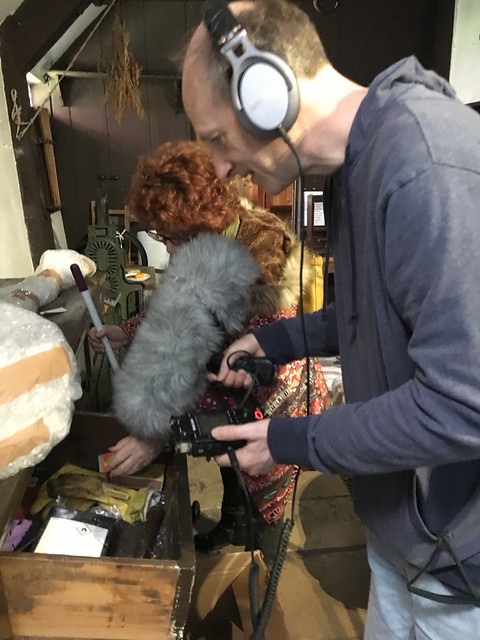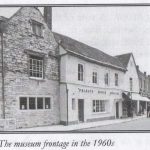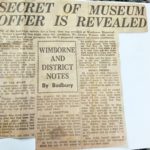Echoes of the Past • Museum of East Dorset (2019)
‘Echoes of the Past‘ was a promenade theatre event created to mark the closing of the Priest’s House Museum in preparation for the next phase in the building’s history. Research by WCT spanned many centuries and focussed on Hilda Coles, the founder of the museum and the many people who have passed through its doors from the streets of Wimborne – gentry, customers, servants, volunteers and friends.
See photos of the production here
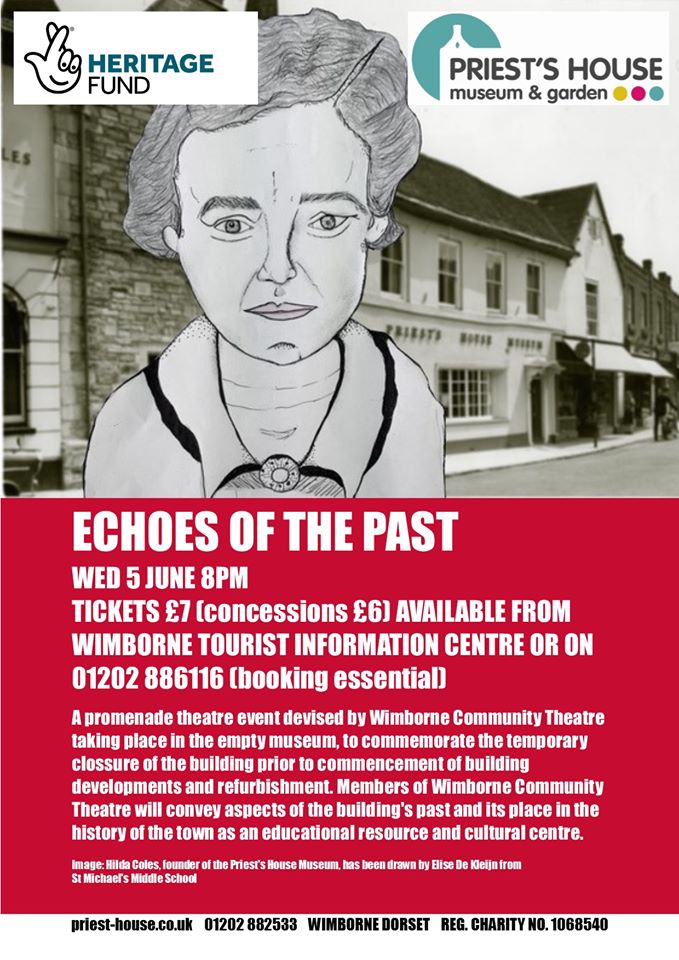
About the production
After the first scene in the Shop, the audience were led simultaneously around the empty museum in three or four groups, visiting five locations to experience imagined moments in time throughout the building’s long history.
IN THE SHOP the Voices of the Building spoke to the assembled audience, including
Animations by students from St Michael’s Middle School, Wimborne working with Alastair Nisbet from ScreenPlay
BY THE STAIRCASE • 2019 & 1918: we saw a Volunteer and a trainee Volunteer and the ghost of Hilda Coles, aged 11 years.
IN THE STATIONERY SHOP • 1880: the audience heard a soundscape of voices and sounds through headphones, relating to the strange story of eccentric stationery shop owner, John Lowe.
IN THE PARLOUR • 1776, we witnessed wool and silk mercer, Elizabeth King, meeting Betty Gulliver, wife of smuggler, Isaac Gulliver.
IN THE GARDEN • 1940, we overheard Hilda Coles telling her parents Blanche and Tom, about her plans to join the War effort, as an ambulance driver.
IN THE KITCHEN • 1891 & 1961, around the old cast iron hearth, Millstream Theatre acted out the story of shop-keeper, Ralphe Lowle (20th century), Hannah Bartlett (19th century), and other servants who worked in the kitchens.
FINALE IN THE SHOP • 1960 & 2019: in the final scene George Watson, Chair of Wimborne Historical Society, welcomed guests with a glass of sherry, as Hilda Coles, handed over the keys to Emma Ayling and developers, Greendale.
Dates: Wednesday, Thursday and Friday, June 5, 6, 7, 2019.
Venue: The Priest’s House Museum, Wimborne
![]() The production received funding from the Priest’s House Museum through the Heritage Lottery Fund
The production received funding from the Priest’s House Museum through the Heritage Lottery Fund
Photos
PERFORMANCES
REHEARSALS
CRAFT-MAKING
WORKSHOPS FOR ECHOES OF THE PAST
Members of WCT held several craft workshops prior to the production to create the set dressings and props for Echoes of the Past.
Led by Clare and Hannah Small, we reproduced Victorian Valentine cards to hang in the Stationer’s shop and bales of cloth and labels for the Parlour scene.
SOUND-MAKING
ST MICHAEL’S MIDDLE SCHOOL ANIMATIONS
MILLSTREAM THEATRE
Programme
© copyright of Wimborne Community Theatre
Research
Read the contents of the Guide to The Priest’s House Museum & Garden
Read a Priest’s House Museum Timeline (with notes on architectural features of the rooms)
Read about notable characters from the Priest’s House story
(Hilda Coles, Tom Coles, Christopher King, Ralph Lowle and Dr Ernest K Le Fleming)
PRESS CUTTING
An old press cutting taken from an edition of The Bournemouth Evening Echo in September 1960 was used as a prop in the play. It gave an account of the announcement of Hilda Coles’ bequest of her house for the town of Wimborne to use as a museum.
Sound Files
Listen to Scene 1: The House welcomes the audience
Listen to Scene 2: The Garden in World War Two
Listen to Scene 3: The Kitchen
Listen to Scene 4: The Staircase
Listen to Scene 5: The Parlour
Listen to Scene 6: The Stationer’s Shop
Listen to Scene 7, Part 1: Finale: What is a Museum?
Listen to Scene 7, Part 2: Finale: The Wimborne Historical Society Meeting
Listen to Scene 7, Part 3: Finale: Goodbye









